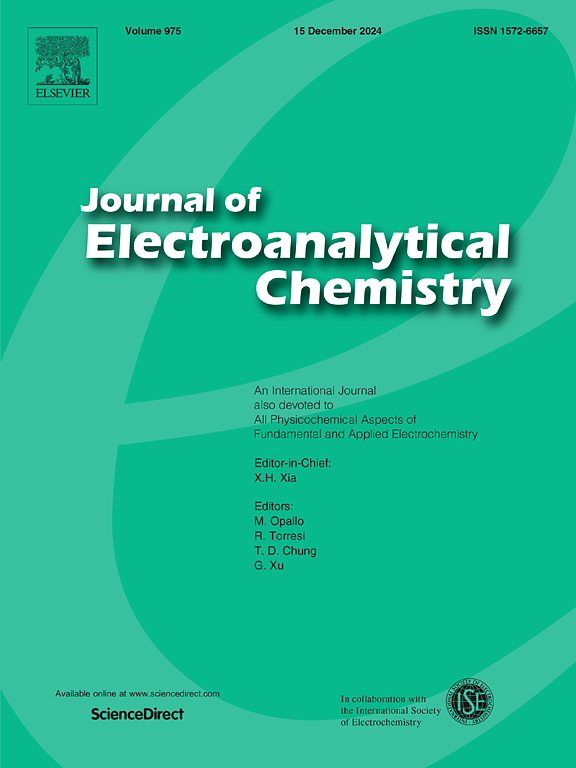Facile synthesis of Nano-SiO2@RF@TiO2 anode for lithium-ion batteries
IF 4.1
3区 化学
Q1 CHEMISTRY, ANALYTICAL
引用次数: 0
Abstract
Silicon dioxide (SiO2), attributed to its exceptional specific capacity, vast resource availability, and cost-effectiveness, has emerged as a promising anode candidate for lithium-ion batteries. Nevertheless, its inherent drawbacks of poor electrical conductivity and pronounced volume expansion during charge/discharge cycles pose significant obstacles to widespread adoption. To address these challenges, innovative strategies involving the design of nanostructured SiO2 and its integration with coatings have been explored. The unique structure of the resultant SiO2-based composites (SiO2@RF@TiO2) profoundly facilitates the swift diffusion of both Li+ ions and electrons, enhances the accessibility of active sites for Li+ insertion, and effectively accommodates the volume fluctuations of SiO2 during operation. The SiO2@RF@TiO2 composite demonstrates remarkable performance, exhibiting a superior specific capacity of 502 mA h g−1 at a current density of 100 mA g−1, outstanding rate capability and enhanced cycling stability (retaining 323 mA h g−1 at 200 mA g−1 after 900 cycles), all of which surpass the SiO2@RF, thereby offering a compelling solution for the development of high-performance SiO2-based anodes for lithium-ion batteries.

锂离子电池负极Nano-SiO2@RF@TiO2的简易合成
二氧化硅(SiO2)由于其特殊的比容量、丰富的资源可用性和成本效益,已成为锂离子电池极具前景的阳极候选材料。然而,其固有的导电性差和在充放电循环中明显的体积膨胀的缺点对其广泛采用构成了重大障碍。为了应对这些挑战,研究人员探索了涉及纳米结构SiO2设计及其与涂层集成的创新策略。所得SiO2基复合材料(SiO2@RF@TiO2)的独特结构极大地促进了Li+离子和电子的快速扩散,增强了Li+插入活性位点的可及性,并有效地适应了SiO2在运行过程中的体积波动。SiO2@RF@TiO2复合材料表现出卓越的性能,在电流密度为100 mA g - 1时表现出502 mA h g - 1的优越比容量,出色的倍率能力和增强的循环稳定性(900次循环后在200 mA g - 1时保持323 mA h g - 1),所有这些都超过了SiO2@RF,从而为高性能锂离子电池sio2基阳极的开发提供了令人信服的解决方案。
本文章由计算机程序翻译,如有差异,请以英文原文为准。
求助全文
约1分钟内获得全文
求助全文
来源期刊
CiteScore
7.80
自引率
6.70%
发文量
912
审稿时长
2.4 months
期刊介绍:
The Journal of Electroanalytical Chemistry is the foremost international journal devoted to the interdisciplinary subject of electrochemistry in all its aspects, theoretical as well as applied.
Electrochemistry is a wide ranging area that is in a state of continuous evolution. Rather than compiling a long list of topics covered by the Journal, the editors would like to draw particular attention to the key issues of novelty, topicality and quality. Papers should present new and interesting electrochemical science in a way that is accessible to the reader. The presentation and discussion should be at a level that is consistent with the international status of the Journal. Reports describing the application of well-established techniques to problems that are essentially technical will not be accepted. Similarly, papers that report observations but fail to provide adequate interpretation will be rejected by the Editors. Papers dealing with technical electrochemistry should be submitted to other specialist journals unless the authors can show that their work provides substantially new insights into electrochemical processes.

 求助内容:
求助内容: 应助结果提醒方式:
应助结果提醒方式:


